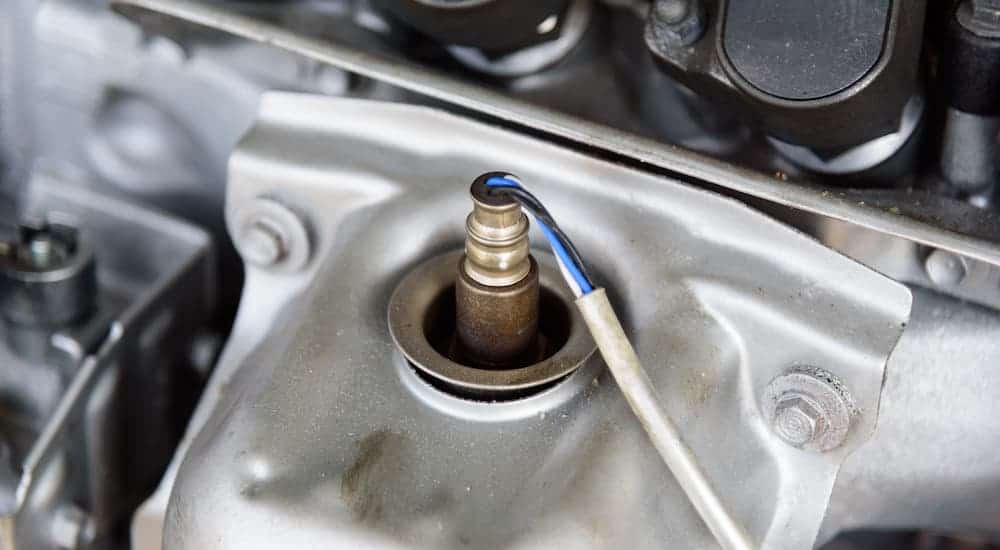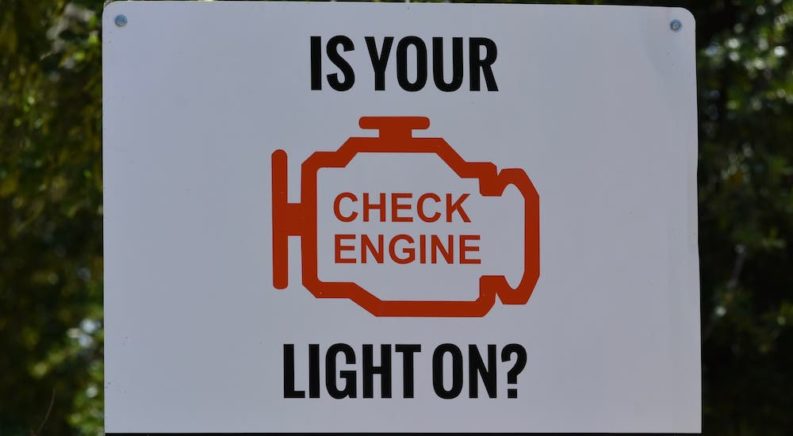There are a number of reasons that your check engine light can come on, and the best way to get it to go off is to fix the issue that it’s warning you about. The solution, of course, depends on exactly what caused the light to come on in the first place––usually an issue with your gas cap, oxygen sensor, or spark plugs. You may need to have your vehicle looked at by a trained technician, though in many cases, the solution is simple, and you can handle it yourself.
A diagnostic device, which you can buy for a low price, will let you connect to your car’s computer and see what has caused the light to come on. Depending on the reason, you may be able to fix it yourself quite easily––though if there is a serious issue and you’re not sure how to handle it, then it’s best to let a professional deal with it. You can also typically use these devices to tell the computer in your car to turn off the check engine light. This should only be done if you’re sure the issue has been fixed, but the light wasn’t turned off––otherwise you’re just ignoring a potentially serious problem.
Some of the most common reasons your check engine light comes on include the following.
#1 – Your Fuel Cap is Loose
This is one of the most common, and fortunately, easiest to fix, reasons that your check engine light can come on. The fuel cap on your car isn’t just there to keep gas or fumes from escaping from your gas tank; it actually serves a crucial function in keeping your car running. In order for your engine to operate properly, there needs to be pressure within the fuel line so that gas moves from the tank to where it needs to go for your engine to run. If your fuel cap is loose or damaged, the necessary pressure won’t exist, and your car can run poorly.
The simple solution is to check your fuel cap––simply remove it and replace it, making sure it’s properly threaded and on securely. As you do this, check the cap itself to see if it’s damaged at all––damage to the cap can prevent it from forming a secure seal. If you see that it’s damaged, then replace it with a new one; this is a cheap fix that can often get the light to turn off. It might take a day or two for the light to turn off if this was the problem, but as long as you don’t feel your car running poorly or detect other issues, just give it time and see if it turns off.
#2 – Your Oxygen Sensor is Faulty

This is another common reason for a check engine light to come on. The oxygen sensor, or O2 sensor, is a device that measures the oxygen levels in your car’s exhaust system. This information is relayed to your car’s computer, which can then make adjustments to ensure the correct mixture of air and fuel in your engine is maintained. Without this sensor, or if it becomes faulty, your car will typically run less efficiently and might even feel a bit rough as the engine idles improperly.
When your oxygen sensor fails or becomes faulty, the check engine light will come on, telling you that it needs to be replaced. While the sensor is not the cheapest part to replace, it’s still a pretty quick and simple solution to the problem. Failing to replace your oxygen sensor can cause your vehicle to fail an emissions test, reduces your engine’s efficiency, and can even result in damage to parts of your engine over time––so it is well worth fixing.
#3 – Your Catalytic Converter is Failing
The catalytic converter in your car is part of your exhaust system, located behind the engine. It turns carbon monoxide that’s created by your engine into carbon dioxide, which is safer in the long run. When it fails, your exhaust will be much more toxic, and you’re sure to fail an emissions test if you don’t replace it.
Replacing your catalytic converter is pretty simple, especially for a trained mechanic, though it can be a bit expensive. Still, it’s very important to have it working properly on your vehicle for the health and wellbeing of everyone around you. Proper maintenance on your vehicle, such as regularly scheduled oil changes, can help keep your engine and exhaust system running smoothly, saving you money in the long run.
#4 – Your Spark Plugs have a Problem
There are a couple of issues that can arise with your spark plugs, which might make your check engine light turn on. If your spark plugs are worn or faulty, they can cause your engine to misfire, making it run rough, and illuminating your check engine light. Similarly, if you have a faulty ignition coil, it can also trigger the light, as can bad spark plug wires. Fortunately, all of these things are pretty simple and inexpensive to replace and will help your vehicle out. Keep in mind that diesel engines don’t have spark plugs or ignition coils, so that’s one thing you can check off if your check engine light comes on with a diesel.

#5 – Your Mass Airflow Sensor is Failing
Your Mass Airflow (MAF) sensor monitors how much air is entering your engine and provides that information to your car’s computer. In order for your vehicle to run properly, you need to have the correct mixture of air and fuel to burn for your engine to do its thing. A faulty mass airflow sensor can make your engine run roughly, as it’s not getting enough air or too much, and can also impact your gas mileage.
Replacing the MAF sensor on your vehicle is pretty simple, especially for a trained mechanic. It’s not the cheapest part to have to replace, but it’s also not the most expensive. And failing to tackle this problem quickly not only makes your car run worse, and makes you spend more on gas, but can also lead to more serious issues over time.
#6 – You Have a More Serious Issue
There are also more serious issues that you might have with your engine that can cause the check engine light to come on. While you might have some indicators for specific problems, not every car will––and the check engine light, or malfunction indicator lamp, is telling you there’s an issue. If you see a diagnostic result that doesn’t match any of the above, or you try some of them, and it doesn’t fix the problem, then you might have a bigger issue that needs to be fixed.
One final thing to note is that your check engine light can come on in two different ways: steady or blinking. A steady light will usually mean something like a loose gas cap or faulty oxygen sensor. A blinking light, on the other hand, means there’s a much more serious issue––one that can be potentially dangerous for you or cause serious damage to your engine and vehicle. Never ignore a warning light, but a blinking one means you need to have your vehicle serviced immediately, and you shouldn’t drive it until you can have the issue fixed.
Proper car maintenance might not be sexy, but it’s vital for making sure your car lasts you a long time and keeps running smoothly.

